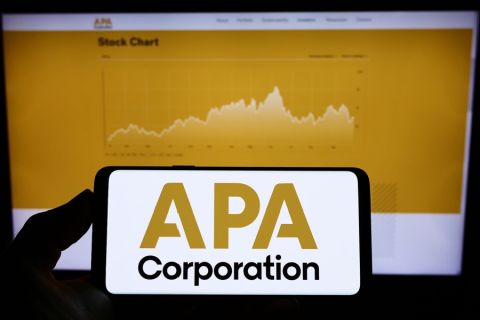Egypt is caught in a Catch-22. Tourism is tanking, and foreign investors are concerned about the country’s security. Yet it is exactly that type of investment that will help the country’s economy recover.
At a presentation in Houston co-sponsored by the Bilateral US-Arab Chamber of Commerce, the World Affairs Council of Houston, and Merlon International Inc., a delegation of Egyptian oil and gas industry representatives gathered to discuss the country’s upcoming licensing round, its fiscal terms, and most importantly the geology that makes it Africa’s largest non-OPEC oil producer and second-largest natural gas producer.
“Energy has been the backbone of the Egyptian economy, and now after a period of some unrest, the government of Egypt is determined to combine energy with other growth objectives that will lead Egypt’s energy sector to the success that it’s capable of,” said John Bretz, chairman of the World Affairs Council of Houston. “Recent discoveries in the Western Desert hold a great deal of promise, and international companies are again looking at Egypt for new opportunities in oil and gas.”
The Western Desert is one of three areas to be included in the bid round. The Egyptian General Petroleum Corp. (EGCP) will offer 15 exploration blocks in the desert as well as the Gulf of Suez, while the Egyptian Natural Gas Holding Co. (EGAS) will offer seven blocks in the Mediterranean and Nile Delta basins. Bids for both rounds are due May 19, 2014, at noon Cairo time.
The prospectivity of the Western Desert is in little doubt. Apache Corp. recently announced the deepest well drilled in the desert along with the first well in a horizontal drilling program targeting tight conventional and unconventional resources. Based on discoveries in the North Tarek and Khalda Offset concessions, the company has applied for two additional development leases to be approved in 2014.
According to Dr. Ahmed Abdelfatah, deputy CEO for exploration at EGCP, basin studies in the Western Desert indicate 7 Bboe of undiscovered hydrocarbons, both conventional and unconventional. In the Gulf of Suez, that number is 5 Bboe to 7 Bboe.
The Mediterranean Sea and the Nile Delta also have tremendous potential. Mahfoze Albony, geologist and vice chairman for exploration and agreement at EGAS, said that despite production in the region dating back to 1975, proved reserves are more than twice the amount of hydrocarbons that already have been produced.
This area has seen recent study, with 32,000 sq km (12,355 sq miles) of multi-azimuth GeoStreamer data acquired. “This is a very successful tool for exploration,” he said. Ocean-bottom cable also has been used, he said, along with Vibroseis data on land.
There have been 655 wells drilled to date, 360 of which have resulted in discoveries, for a 55% success rate. Most of these discoveries are of Pliocene and Miocene age, he said.
Seven exploration blocks are on offer in the EGAS bid round. Two are onshore in the Nile Delta near existing facilities. The offshore blocks are in deep and ultra-deep waters.
“We still have huge reserves, especially in deep water,” he said. “The EGAS bid round is an opportunity to discover and produce oil and gas.”
Recommended Reading
Green Swan Seeks US Financing for Global Decarbonization Projects
2024-02-21 - Green Swan, an investment platform seeking to provide capital to countries signed on to the Paris Agreement, is courting U.S. investors to fund decarbonization projects in countries including Iran and Venezuela, its executives told Hart Energy.
APA Shuffles Leadership Following Callon Acquisition
2024-04-09 - APA CEO John J. Christmann said the changes will structure leadership to better align with the company’s “evolving” business needs.
Sunoco’s $7B Acquisition of NuStar Evades Further FTC Scrutiny
2024-04-09 - The waiting period under the Hart-Scott-Rodino Antitrust Improvements Act for Sunoco’s pending acquisition of NuStar Energy has expired, bringing the deal one step closer to completion.
JMR Services, A-Plus P&A to Merge Companies
2024-03-05 - The combined organization will operate under JMR Services and aims to become the largest pure-play plug and abandonment company in the nation.
Analyst Questions Kimmeridge’s Character, Ben Dell Responds
2024-05-02 - The analyst said that “they don’t seem to be particularly good actors.” Ben Dell, Kimmeridge Energy Partners managing partner, told Hart Energy that “our reputation is unparalleled.”





